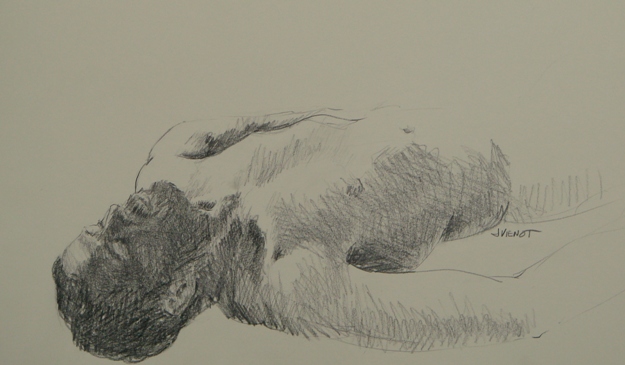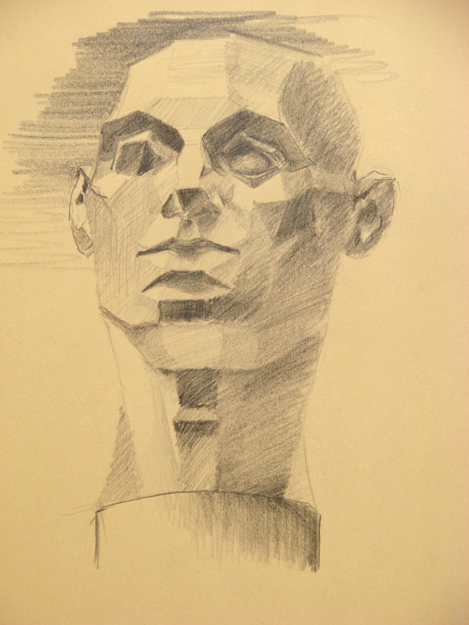
 |
Having spent nearly two years improving my skills at figure drawing, I think I would like to spend more time thinking about how the figure is presented on the paper, which begins to determine whether the piece can stand alone as a composition. When I look back at the bulk of my work, the pieces that appeal the most to me have an unfinished quality, in that perhaps I did not try to capture the figure in its entirety. I’d like to preserve that quality. This week at Studio b.’s figure drawing session, we had an exquisitely beautiful model, and I found that I still need a lot of work on portraiture, as I think I failed miserably to get a likeness let alone to show how pretty she is. However, I like the pieces I turned out, since they have just a little more “atmosphere” than much of my previous work. Something seemed different about this night at Studio b., perhaps the bad weather, it being the night of the terrible Tuscaloosa tornado. |
 At left I also am posting the drawing, now more developed, that I had started on the last day of the portrait workshop that I was taking from Charlotte Arnold last month. When I last posted it, it was primarily a head study. I used a photograph of that model and her pose, for reference.
At left I also am posting the drawing, now more developed, that I had started on the last day of the portrait workshop that I was taking from Charlotte Arnold last month. When I last posted it, it was primarily a head study. I used a photograph of that model and her pose, for reference.
Most of my images are available for purchase. Contact me if you are interested. — Joan Vienot












